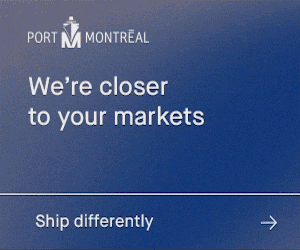The Australian Department of Agriculture and Water Resources introduced seasonal import measures on July 10, 2018 to manage the risk of Brown marmorated stink bug (BMSB) during the high risk season.
New seasonal measures will apply for goods shipped on or between 1 September 2018 to 30 April 2019.
Risks
The Brown marmorated stink bug (BMSB) is not found in Australia and needs to be kept out. It could severely impact our agricultural industries. Juveniles and adults feed on, and can severely damage, fruit and vegetable crops. Adult BMSB can also be a nuisance, entering vehicles, homes and factories for shelter over winter.
They can arrive in Australia on cargo and containers shipped between September and April. This coincides with late autumn and winter in the Northern Hemisphere.
Find out how to identify and report brown marmorated stink bug.
2018-19 season measures
You must comply with seasonal measures for certain goods arriving from certain countries that are shipped between 1 September 2018 and 30 April 2019 inclusive.
These measures will include mandatory treatment and increased intervention before arrival into Australian territory.
All goods must still meet standard import conditions in BICON.
Draft measures
The proposed seasonal measures apply to certain goods shipped as sea cargo from target risk countries.
We will publish details of final seasonal measures soon. This will include applicable goods and countries, and specific treatment rates.
Draft measures include:
- heightened surveillance on all roll-on/roll-off (ro-ro) and general cargo vessels with pre-arrival reporting through a questionnaire and daily checks for BMSB
- heightened surveillance to identify high risk vessels to be directed for inspection or treatment
- mandatory offshore treatment for target high risk goods
- increased onshore intervention for target risk goods
- export or destruction of target high risk goods requiring mandatory offshore treatment and arriving untreated, unless exceptional circumstances are granted.
Target risk countries
- USA
- Italy
- Germany
- France
- Russia
- Greece
- Hungary
- Romania
- Georgia
- Japan (heightened vessel surveillance only).
Target high risk goods
- break bulk, including vehicles, machinery, equipment and parts
- bricks, tiles, ceramics, steel, stone and cement
- goods likely to be stored in a manner that provides access for BMSB to overwinter.
Target risk goods
- chemicals, chemical products, salt, minerals, fertilisers
- plastics, wadding, tyres
- wood pulp, printed matter, straw, paper, cardboard.
Exempted goods
Seasonal measures do not apply to goods not identified as ‘target high risk’ and ‘target risk’.
Treatment options
- heat treatment
- methyl bromide fumigation
- sulfuryl fluoride fumigation.
Information sessions
We held information sessions in Sydney and Melbourne for industry. This included outlining our draft seasonal measures.
You can download and read:
- our powerpoint presentation
- industry questions and our answers (to be available shortly).
For more information, visit agriculture.gov.







